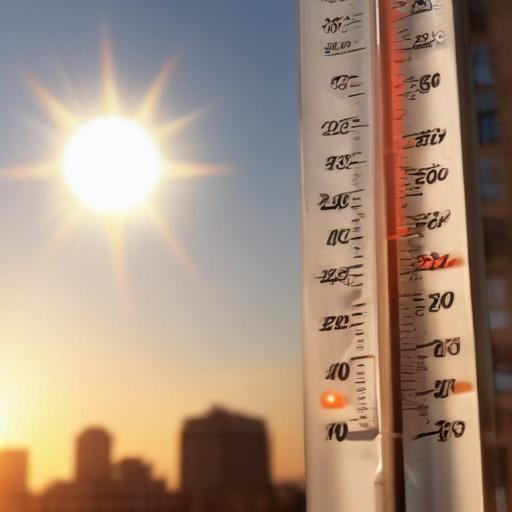Much of the eastern United States is currently experiencing dangerous heat conditions as the week begins, with nearly 200 million people under various heat alerts. On Monday, around 24 million individuals are facing extreme heat warnings, with the effects of the heat wave being felt from South Dakota to Texas and extending eastward through the southern Great Lakes to the East Coast.
Cities affected by extreme heat warnings include Des Moines, St. Louis, Memphis, New Orleans, Jacksonville, and Raleigh, with heat indexes potentially climbing to 110 or 115 degrees Fahrenheit. Temperatures in these locations are expected to range from the mid-90s to the low 100s. Regions designated as Level 4 out of 4 heat risk include much of the Florida Peninsula and areas northward to Georgia and the Carolinas.
This ongoing heat wave follows remarkable heat over the weekend, including a record high of 100 degrees in Tampa, marking the first time this milestone has been reached in the city since weather records began in 1890. Other cities also broke daily heat records, indicating a concerning trend as the forecast predicts even higher temperatures for Monday.
As the week progresses, a cold front is anticipated to approach from the northwest, promising a significant reduction in temperatures by the weekend. By then, most of the eastern U.S. should experience a brief reprieve, featuring below-average temperatures. The heat is forecasted to intensify through Tuesday and Wednesday, with highs again potentially reaching the mid-90s to around 100 along the East Coast urban corridor.
Looking ahead, it appears that a transition to more pleasant weather is on the horizon. By late this week and into the weekend, much of the region will likely experience temperatures that are 5 to 10 degrees below average for early August. In fact, areas in the Northeast may see temperatures drop as much as 20 degrees cooler compared to midweek, with highs expected in the 70s and 80s.
This shift not only signifies a welcome relief from the oppressive heat but also brings forward thoughts of the upcoming seasons, providing a glimmer of hope as summer starts to transition into fall. The expected decrease in humidity levels will also enhance comfort for many, lifting the heat stress that has impacted millions over the past weeks.
